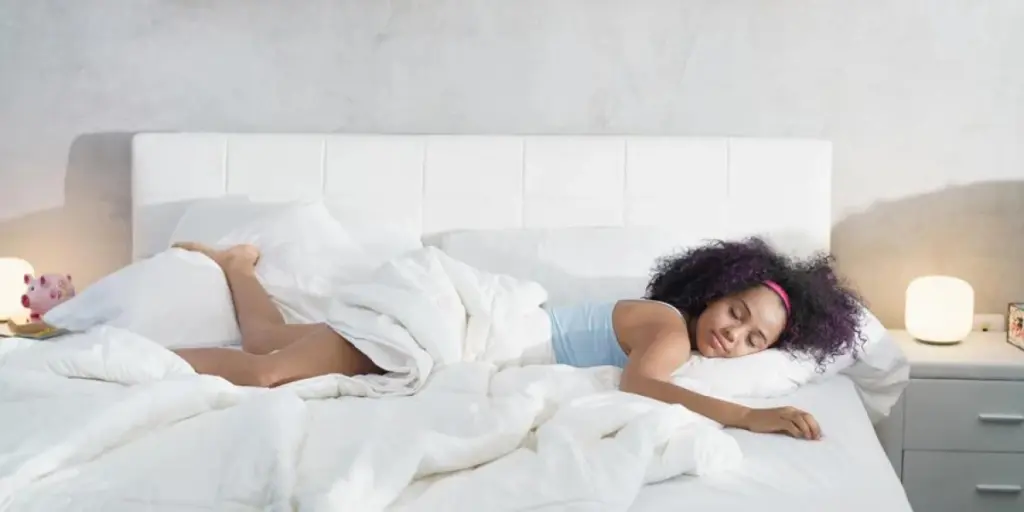In 2024, the world of home décor embraces quilts as a centerpiece of comfort and modern aesthetic. Quilts, once a symbol of traditional craftsmanship, are now at the forefront of contemporary design, seamlessly blending functionality with artistic expression. This year, we witness an exciting shift where quilts are not just bed coverings but a statement of style and personal taste in home interiors. Innovations in materials and design have elevated quilts beyond their conventional roles, catering to a diverse range of preferences from minimalist to bold patterns. As we delve into the quilt trends of 2024, we explore how these versatile pieces are redefining comfort and elegance in living spaces.
Table of Contents:
1. Market overview
2. Key design and material innovations
3. Top-sellers driving market trends
1. Market overview

The quilt market in 2024 is experiencing a significant expansion, capturing the attention of global investors and leading players in the industry. According to a detailed market study, the global quilt market, which had a revenue of 231.253 billion USD in 2019, is projected to reach 311.677 billion USD in 2025, showcasing an impressive Compound Annual Growth Rate (CAGR) of 5.1% during the period from 2020 to 2025. This growth is reflective of quilts’ evolving role from traditional bedding to stylish home décor elements.
Global market dynamics:
The quilt market’s growth is fueled by several global trends. First, there’s a rising consumer awareness of the importance of quality sleep and comfort, which has elevated the status of quilts from mere bedding to a crucial component of bedroom décor. Additionally, the increasing popularity of home decoration and DIY interior design trends, often showcased on social media and home improvement channels, has put quilts in the limelight as versatile décor elements.
Technological advancements:
Innovation in textile technology has led to the development of advanced materials for quilts that offer enhanced comfort, durability, and aesthetic appeal. Features like temperature regulation, hypoallergenic properties, and eco-friendly materials are increasingly sought after, catering to a more health-conscious and environmentally aware consumer base.
Cultural influences and regional trends:
Culturally, quilts hold a significant place in many regions, often associated with heritage and craftsmanship. In North America, for instance, quilts are part of the cultural tapestry, with a rich history in craftsmanship. This has led to a sustained interest in quilt-making and a marked preference for quilts that embody traditional craftsmanship combined with modern design elements.

In Europe, the focus is often on luxury and elegance, with consumers gravitating towards high-end materials like silk and linen. The European market also shows a growing preference for sustainable and organic materials, reflecting a broader global trend towards environmentally responsible consumerism.
The Asia-Pacific region is another key player in the quilt market. Here, the focus is on functionality and value. Consumers in countries like China and India, where rapid urbanization and increased disposable income are observed, are increasingly adopting modern home décor trends while still valuing affordability and practicality.
Consumer behavior:
Modern consumers are well-informed and have specific preferences, often seeking personalized options. The trend towards customization in quilts – where consumers can choose fabrics, patterns, and even fill materials – is a response to this demand. Additionally, with the rise in online retail, consumers have access to a wider range of quilt styles and prices, further driving market competitiveness and diversity.
2. Key design and material innovations
The quilt industry in 2024 is marked by significant design and material innovations that reflect both aesthetic and environmental consciousness. One of the defining trends is the use of bold, expressive patterns that transcend traditional quilt designs. These include geometric shapes, abstract forms, and even digital prints that cater to a contemporary taste, seamlessly blending tradition with modernity. Additionally, the incorporation of vibrant color schemes, sometimes in contrast with more subdued or pastel shades, is a noticeable trend, offering a visual feast that complements a variety of interior décor themes.
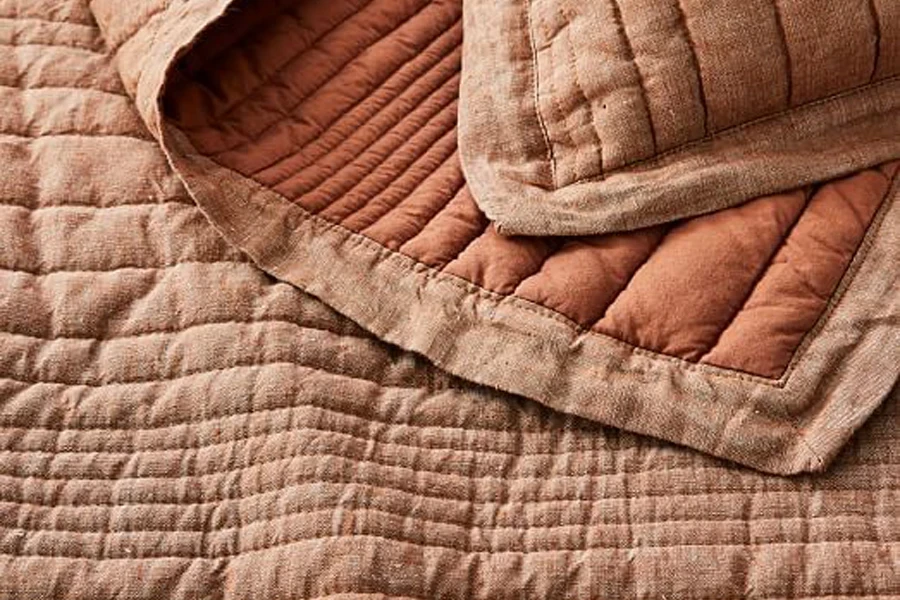
In terms of materials, there’s a noticeable shift towards eco-friendly and sustainable fabrics. Advancements in fabric technology have led to the creation of materials that are not only eco-friendly but also enhance the comfort and usability of quilts. For instance, the integration of advanced fibers like Tencel and bamboo into quilt fabrics is a significant trend. These materials are renowned for their softness, breathability, and moisture-wicking properties, making them ideal for quilts used in diverse climates and for various purposes.
Furthermore, the use of recycled and upcycled materials in quilts is gaining popularity. This trend is fueled by a growing consumer demand for products that minimize environmental impact without compromising on quality or aesthetic appeal. Recycled polyester, derived from post-consumer plastic bottles, is one such material that is being increasingly used in quilt batting. This not only contributes to reducing plastic waste but also provides a durable and lightweight filling for quilts.
The importance of sustainable certification in materials is also highlighted. Fabrics like GOTS-certified organic cotton and linen are becoming the standard in high-quality quilts. These certifications assure consumers that the products they purchase are produced in an environmentally and socially responsible manner, from the cultivation of raw materials to the final product. Additionally, these natural fibers are favored for their hypoallergenic qualities, making quilts suitable for a broader range of users, including those with sensitive skin or allergies.
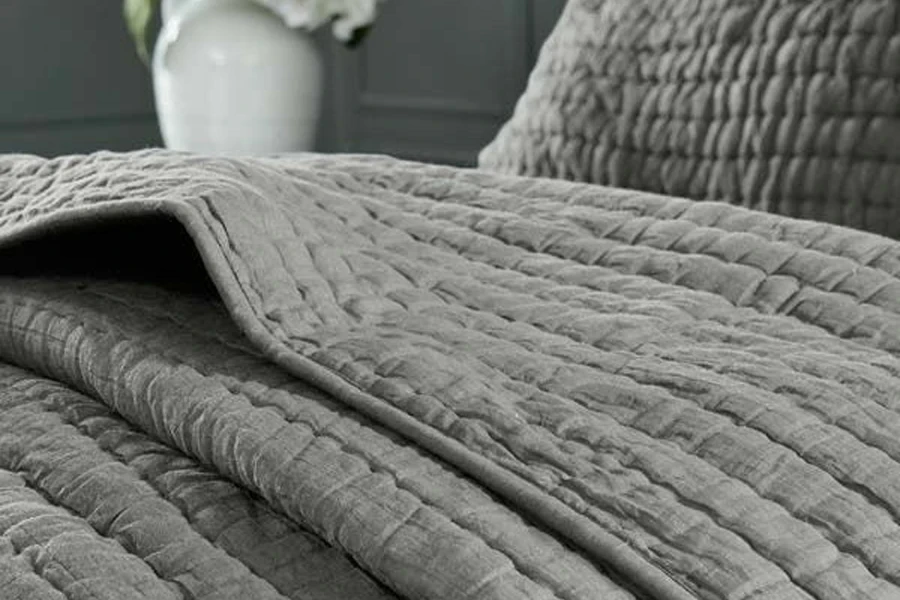
Innovation in fabric finishes is also noteworthy. Treatments that impart additional functional properties like antimicrobial, anti-allergen, or water-repellent capabilities are being increasingly applied to quilt fabrics. Such treatments not only extend the life of the quilt but also enhance its utility, especially in households with children or pets.
Another notable trend is the growing interest in multifunctional quilts. Quilts in 2024 are not just bedding items but are also seen as decorative pieces for walls or furniture. This dual-purpose approach aligns with the contemporary ethos of functionality and aesthetics, making quilts a versatile addition to any space.
The quilt market in 2024 is a blend of innovative design and material choices. The focus on bold patterns, vibrant colors, and sustainable materials reflects a broader trend in home décor toward products that are both aesthetically pleasing and environmentally responsible. As the quilt market continues to evolve, these trends are expected to shape consumer preferences and define the industry’s direction in the coming years.
3. Top-sellers driving market trends
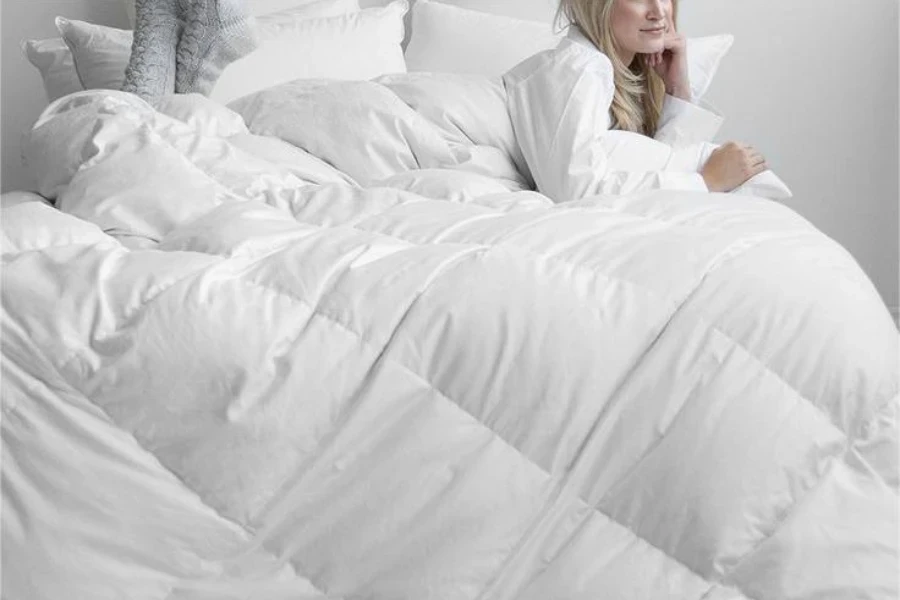
In 2024, the quilt market is being significantly shaped by top-selling products that embody the latest design and material trends, resonating deeply with consumer preferences.
According to South Shore Fine Linens, one standout product leading the market trend is the Parachute Linen Box Quilt. This quilt has become a consumer favorite for its blend of style and comfort. Made with Oeko-Tex standard-certified percale cotton and a polyester batting fill, it offers breathability and a modern aesthetic. Its linen exterior not only provides a unique texture but also enhances the quilt’s appeal for those seeking a contemporary yet comfortable bedroom accessory.
NBC News highlights the Brooklinen Lightweight Quilt as another market leader. This product distinguishes itself through its craftsmanship and material choice. Made from long-staple cotton, it is hand-stitched by artisans, providing a level of detail and quality that is highly valued in the market. Its design, which features dotted-line stitches, offers a contemporary look that appeals to a broad range of consumers.
Another top-seller identified by Real Simple is the California Design Den Cotton Quilt Set. This product has gained popularity for its affordability without compromising on quality. The use of 100% cotton for both the exterior and batting ensures comfort and durability. The hand-stitched design, coupled with its machine-washable feature, makes it a practical and appealing choice for a wide demographic.
The Spruce emphasizes the trend toward quilts that serve dual purposes. The Threshold Channel Stitch Velvet Quilt, for instance, has been a top seller due to its stylish and subtle appearance, making it suitable not only for bedding but also as a decorative piece. The use of cotton tufted into a velvet finish provides a soft, warm, and cozy experience, catering to consumers looking for comfort in their quilts.
Lastly, products like the Annie Selke Washed Linen Natural Quilt, as mentioned by South Shore Fine Linens, are driving the market with their focus on combining traditional quilting techniques with modern designs. This quilt uses linen on the front and cotton percale on the back, appealing to consumers who value both aesthetics and comfort.
These top-selling quilts reflect the 2024 market trends, where the emphasis is on combining quality materials, innovative designs, and multifunctional usage, catering to a wide range of consumer needs and preferences. As these products continue to set the standard, they shape the quilt market’s direction, influencing both current and future consumer choices.
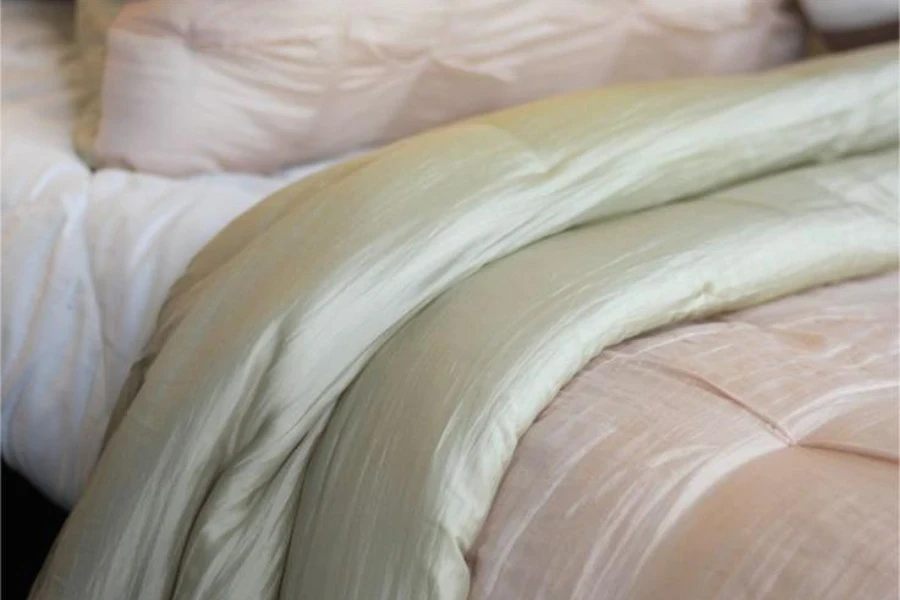
Conclusion
The quilt market of 2024 demonstrates the importance of staying abreast of evolving trends for both businesses and enthusiasts in the home décor sector. The year has seen a remarkable fusion of traditional craftsmanship with modern aesthetics, highlighting the significance of understanding consumer preferences in design, material, and functionality. For businesses, this means continually adapting to and embracing these trends to meet market demands. For enthusiasts, it’s an opportunity to explore and integrate these innovative styles into their own spaces, reflecting personal tastes and contemporary living standards. Looking ahead, the quilt market is poised to continue its trajectory of innovation and diversification. The increasing focus on eco-friendly materials and sustainable practices is likely to shape future design and production processes, reflecting a growing global consciousness towards environmental impacts.
